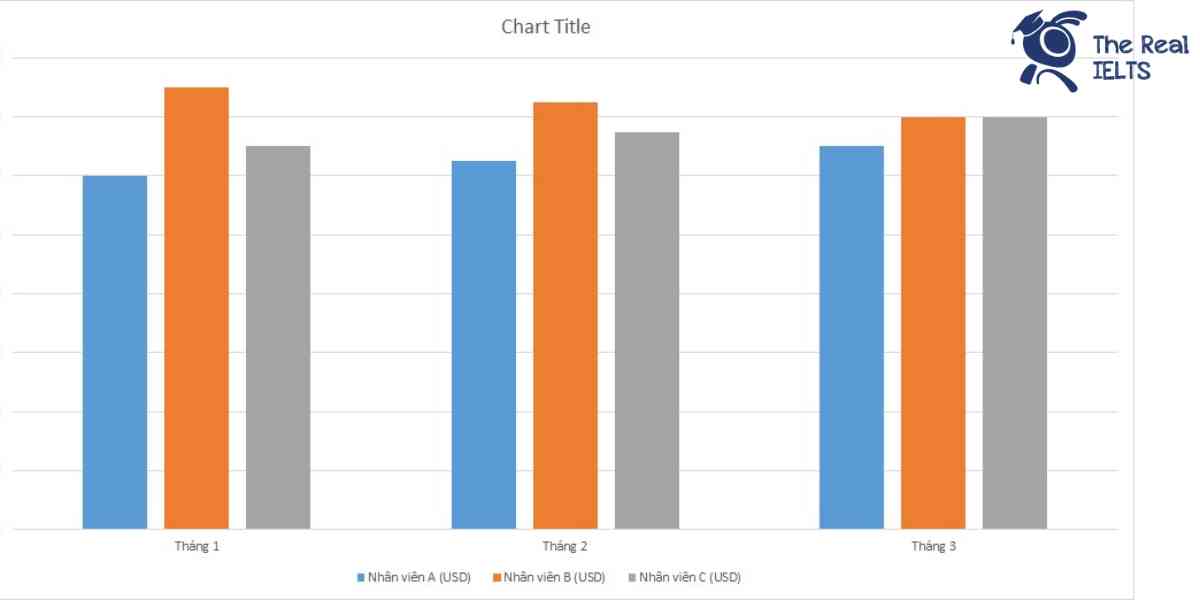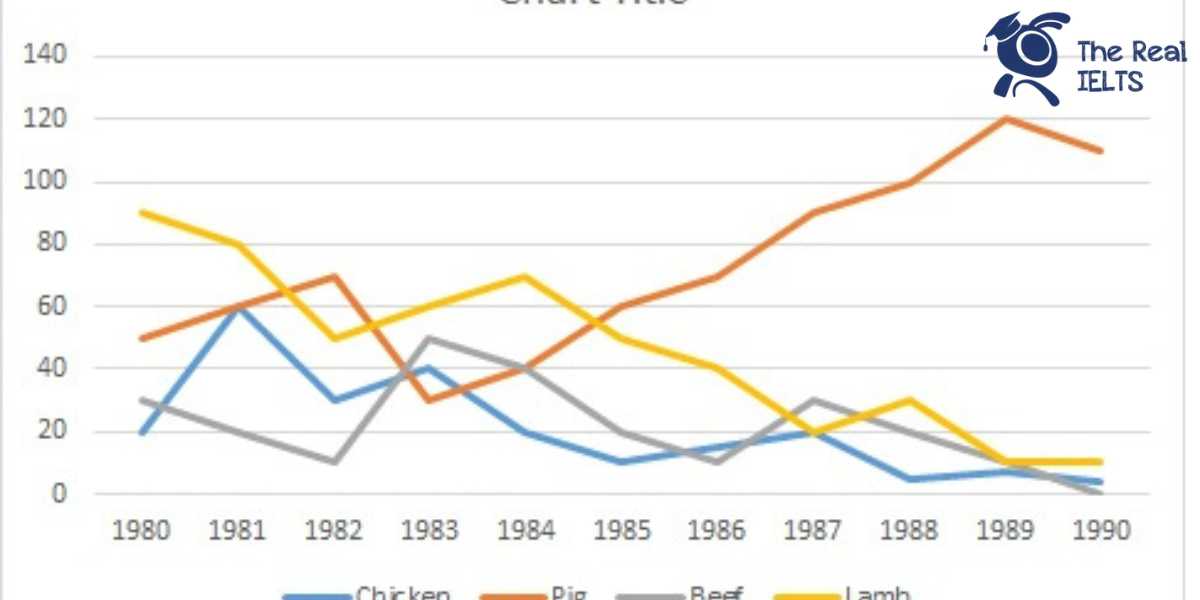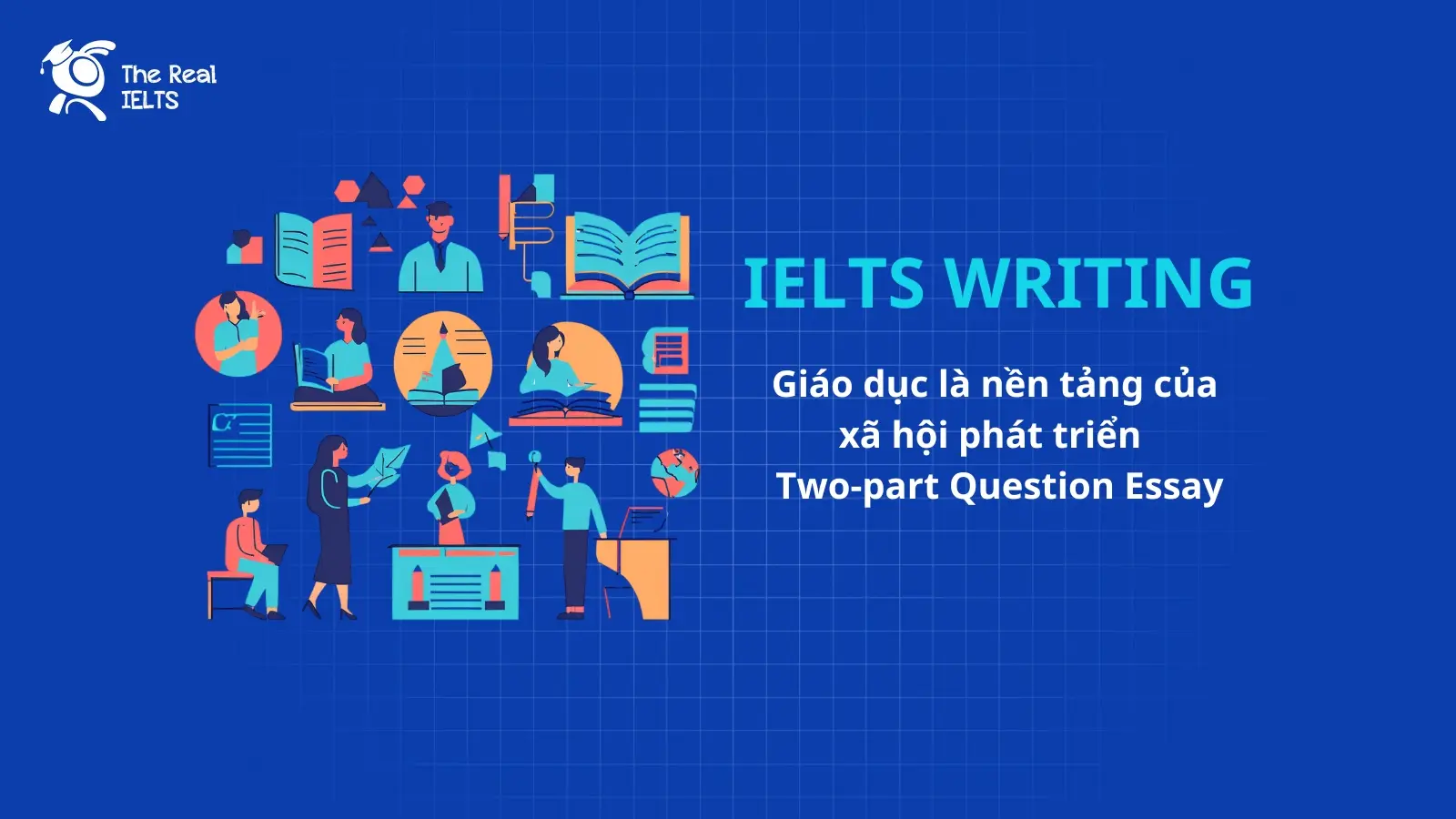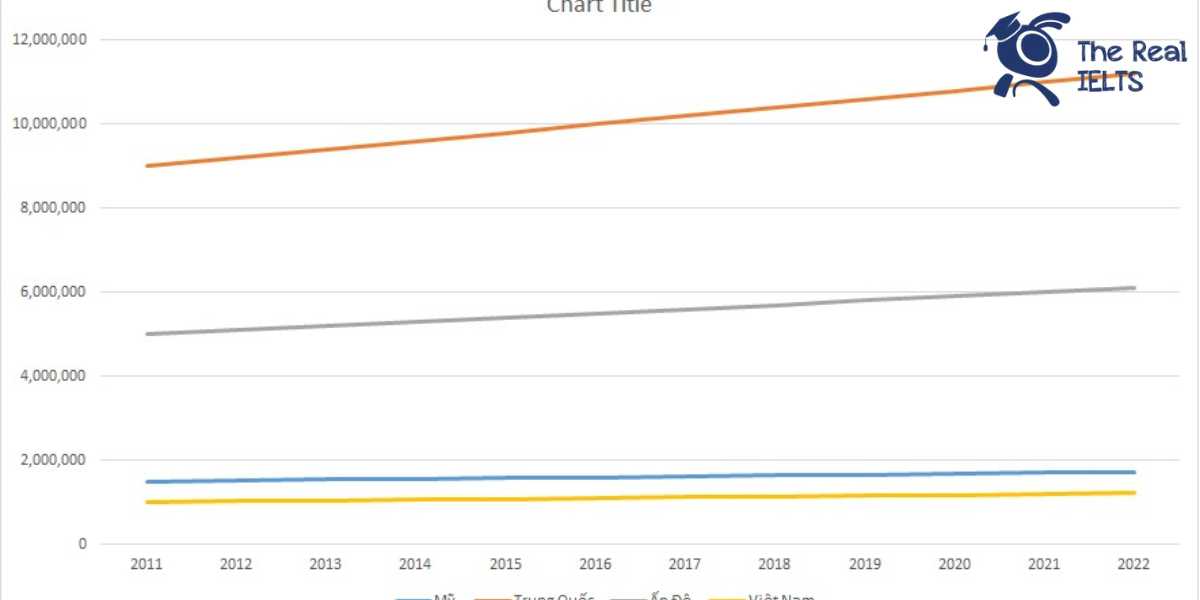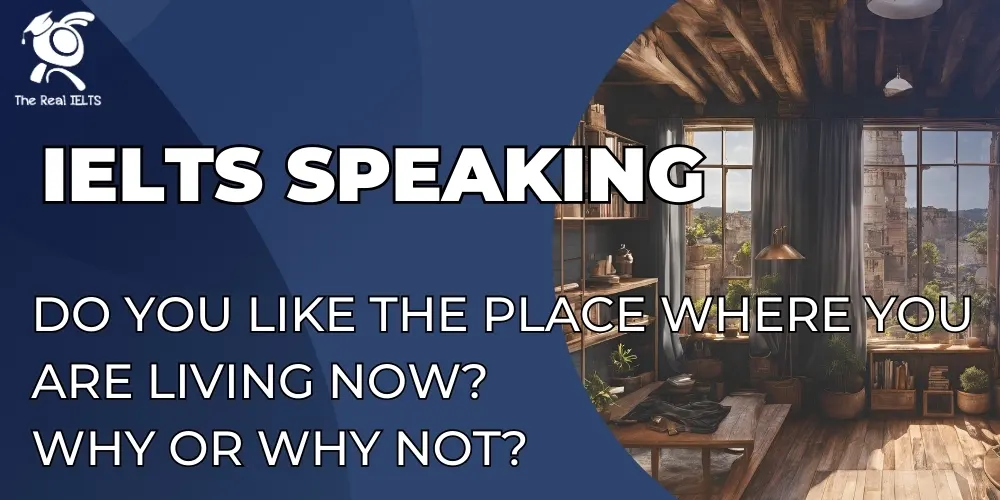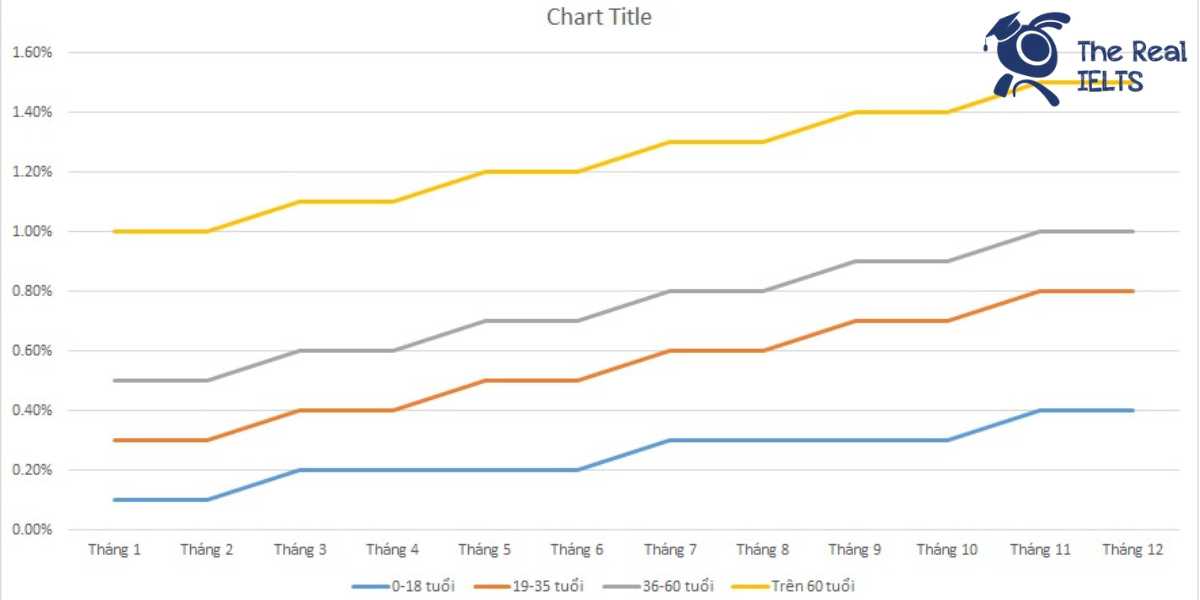Kỹ năng đọc hiểu là chìa khóa để chinh phục kỳ thi IELTS, nơi thí sinh đối mặt với các văn bản học thuật đa dạng và phức tạp. IELTS Reading yêu cầu khả năng phân tích nhanh, nắm bắt ý chính và trả lời chính xác 40 câu hỏi trong 60 phút. Để đạt band cao, người học cần rèn luyện từ vựng chuyên sâu, kỹ năng skimming, scanning và quản lý thời gian hiệu quả, đảm bảo tối ưu hóa điểm số trong phần thi này.
Đọc thêm: IELTS Reading 11 dạng bài phần 5
The Impact of Urban Green Spaces
Urban green spaces, such as parks and community gardens, play a vital role in improving the quality of life in cities. These areas provide residents with opportunities for recreation, exercise, and social interaction, which contribute to physical and mental well-being. Studies have shown that access to green spaces can reduce stress levels and improve mood, particularly in densely populated urban environments. Additionally, green spaces help mitigate environmental issues. Trees and plants absorb carbon dioxide, reduce air pollution, and lower city temperatures by providing shade and cooling effects. In many cities, urban planners prioritize the development of green spaces to combat the heat island effect, where concrete and asphalt trap heat, causing cities to become warmer than surrounding rural areas.
However, creating and maintaining green spaces can be challenging. Limited land availability and high costs often restrict the expansion of parks in city centers. Some cities have addressed this by transforming unused rooftops into green roofs or converting vacant lots into community gardens. Despite these efforts, not all residents have equal access to green spaces, as low-income neighborhoods often have fewer parks compared to wealthier areas. To address this, some governments have introduced policies to ensure equitable distribution of green spaces. Overall, urban green spaces are essential for sustainable city living, offering both environmental and social benefits that enhance urban life.
Reading Questions
- Urban green spaces improve both physical and mental health of city residents.
- Green spaces completely eliminate air pollution in urban areas.
- The heat island effect is caused by the lack of green spaces in cities.
- All cities have successfully provided equal access to green spaces for all residents.
- Green roofs are a common solution for creating green spaces in cities with limited land.
Answers
- True
- False
- Not Given
- False
- True
Explanations
- True: Đoạn văn nêu rõ rằng các không gian xanh đô thị cung cấp cơ hội cho việc giải trí, tập thể dục và tương tác xã hội, góp phần cải thiện sức khỏe thể chất và tinh thần. Nó cũng đề cập rằng các không gian xanh giúp giảm căng thẳng và cải thiện tâm trạng.
- False: Đoạn văn nói rằng cây cối và thực vật giúp giảm ô nhiễm không khí, nhưng không nói rằng chúng hoàn toàn loại bỏ ô nhiễm không khí, vì vậy thông tin này sai.
- Not Given: Đoạn văn giải thích hiệu ứng đảo nhiệt đô thị là do bê tông và nhựa đường giữ nhiệt, khiến thành phố nóng hơn khu vực nông thôn xung quanh, nhưng không nói rõ rằng thiếu không gian xanh là nguyên nhân trực tiếp gây ra hiệu ứng này.
- False: Đoạn văn đề cập rằng không phải tất cả cư dân đều có quyền tiếp cận bình đẳng với không gian xanh, vì các khu vực thu nhập thấp thường có ít công viên hơn so với các khu vực giàu có hơn.
- True: Đoạn văn đề cập rằng một số thành phố đã biến các mái nhà không sử dụng thành mái xanh để giải quyết vấn đề thiếu đất, cho thấy đây là một giải pháp phổ biến.
The Impact of Urban Green Spaces
Urban green spaces, such as parks, gardens, and tree-lined streets, play a critical role in enhancing the quality of life in cities. These areas provide residents with opportunities for recreation, relaxation, and social interaction, fostering a sense of community. Studies show that access to green spaces can improve mental health by reducing stress and anxiety, with regular exposure to nature linked to lower rates of depression. Physically, green spaces encourage activities like walking, jogging, or cycling, contributing to better cardiovascular health. Moreover, urban greenery helps mitigate environmental issues. Trees and plants absorb carbon dioxide, reduce air pollution, and lower city temperatures through shade and evapotranspiration. However, creating and maintaining these spaces can be challenging due to limited land availability and high costs. In densely populated cities, competition for land often prioritizes commercial or residential development over green initiatives. Despite these obstacles, cities like Singapore and Copenhagen have successfully integrated green spaces into their urban planning, setting examples for others. The benefits of green spaces extend beyond aesthetics, offering practical solutions to urban challenges. As populations grow and cities expand, prioritizing green spaces will be essential for sustainable urban development.
Reading Questions
- What is the primary role of urban green spaces according to the passage?
A. Reducing urban crime rates
B. Enhancing the quality of urban life
C. Increasing property values
D. Promoting industrial development - Which of the following benefits are associated with urban green spaces? (Choose 2 correct answers)
A. Improved mental health
B. Reduced traffic congestion
C. Better cardiovascular health
D. Increased employment opportunities - How do green spaces help address environmental issues?
A. By reducing noise pollution
B. By absorbing carbon dioxide and lowering temperatures
C. By increasing biodiversity only
D. By eliminating all air pollutants - What challenges are mentioned in creating urban green spaces? (Choose 2 correct answers)
A. Limited land availability
B. Lack of public interest
C. High maintenance costs
D. Insufficient government policies - Which cities are cited as successful examples of integrating green spaces?
A. New York and Tokyo
B. Singapore and Copenhagen
C. London and Sydney
D. Dubai and Shanghai
Answers
- B
- A and C
- B
- A and C
- B
Explanations
- Câu 1: Đáp án đúng – B
Đoạn văn nêu rõ rằng không gian xanh đô thị “play a critical role in enhancing the quality of life in cities” (có vai trò quan trọng trong việc nâng cao chất lượng cuộc sống ở thành phố). Các lựa chọn khác như A (giảm tội phạm), C (tăng giá trị bất động sản), và D (thúc đẩy phát triển công nghiệp) không được đề cập trong đoạn văn. - Câu 2: Đáp án đúng – A và C
Đoạn văn đề cập rằng không gian xanh giúp “improve mental health by reducing stress and anxiety” (cải thiện sức khỏe tinh thần) và khuyến khích các hoạt động như đi bộ, chạy bộ, dẫn đến “better cardiovascular health” (sức khỏe tim mạch tốt hơn). Lựa chọn B (giảm ùn tắc giao thông) và D (tăng cơ hội việc làm) không được nhắc đến. - Câu 3: Đáp án đúng – B
Đoạn văn giải thích rằng cây cối và thực vật “absorb carbon dioxide, reduce air pollution, and lower city temperatures” (hấp thụ CO2, giảm ô nhiễm không khí, và làm giảm nhiệt độ). Lựa chọn A (giảm ô nhiễm tiếng ồn) và C (chỉ tăng đa dạng sinh học) không được đề cập, còn D (loại bỏ tất cả chất ô nhiễm) là quá tuyệt đối và không chính xác. - Câu 4: Đáp án đúng – A và C
Đoạn văn nêu rõ các thách thức bao gồm “limited land availability” (quỹ đất hạn chế) và “high costs” (chi phí cao) trong việc tạo và duy trì không gian xanh. Lựa chọn B (thiếu sự quan tâm của công chúng) và D (thiếu chính sách chính phủ) không được đề cập trong đoạn văn. - Câu 5: Đáp án đúng – B
Đoạn văn trực tiếp đề cập đến “Singapore and Copenhagen” là các thành phố đã tích hợp thành công không gian xanh vào quy hoạch đô thị. Các lựa chọn khác (A, C, D) không được nhắc đến trong đoạn văn.
The Role of Technology in Education
Technology has transformed education, reshaping how knowledge is delivered and accessed. Online learning platforms, such as Massive Open Online Courses (MOOCs), enable students worldwide to study at their own pace, often for free or at low cost. Educators argue that these platforms democratize education, making it accessible to those in remote or underserved areas. However, some experts warn that over-reliance on digital tools may reduce face-to-face interaction, potentially hindering the development of critical social skills. Virtual reality (VR) and artificial intelligence (AI) are also gaining traction in classrooms. VR allows students to explore historical sites or conduct virtual science experiments, enhancing engagement. AI-driven tools provide personalized feedback, helping students address their weaknesses. Despite these benefits, critics point out that not all schools can afford advanced technologies, creating disparities between wealthier and poorer institutions. Furthermore, there is concern that excessive screen time may negatively affect students’ health, including eye strain and reduced attention spans. Supporters of technology in education counter that when used appropriately, digital tools improve learning outcomes and prepare students for a tech-driven world. Policymakers are urged to balance innovation with equitable access to ensure all students benefit. While technology continues to evolve, its integration into education remains a topic of debate, with advocates and skeptics both presenting compelling arguments.
Questions
- Do educators believe that online learning platforms make education more accessible?
- Is there evidence that technology in education eliminates the need for traditional classrooms?
- Do critics argue that advanced technologies in schools create inequalities?
- Are virtual reality tools used to improve students’ physical fitness?
- Do supporters claim that digital tools help students adapt to future technological demands?
Answers
- Yes
- Not Given
- Yes
- No
- Yes
Explanations
- Câu 1: Đáp án Yes
Đoạn văn nêu rằng các nhà giáo dục cho rằng các nền tảng học trực tuyến, như MOOCs, giúp dân chủ hóa giáo dục, khiến nó dễ tiếp cận hơn với những người ở khu vực xa xôi hoặc thiếu thốn. Điều này xác nhận quan điểm rằng các nhà giáo dục tin vào tính dễ tiếp cận của các nền tảng này. - Câu 2: Đáp án Not Given
Đoạn văn không đề cập đến việc công nghệ trong giáo dục có thể loại bỏ hoàn toàn nhu cầu về lớp học truyền thống. Mặc dù có nói về các công cụ số và học trực tuyến, không có thông tin rõ ràng rằng chúng thay thế hoàn toàn lớp học truyền thống. - Câu 3: Đáp án Yes
Đoạn văn chỉ ra rằng các nhà phê bình cho rằng không phải trường học nào cũng có khả năng chi trả cho các công nghệ tiên tiến, dẫn đến sự chênh lệch giữa các trường giàu và nghèo. Điều này xác nhận quan điểm rằng công nghệ tạo ra bất bình đẳng. - Câu 4: Đáp án No
Đoạn văn đề cập rằng thực tế ảo (VR) được sử dụng để khám phá các địa điểm lịch sử hoặc thực hiện thí nghiệm khoa học, không phải để cải thiện thể chất của học sinh. Quan điểm về việc VR cải thiện thể chất là trái ngược với thông tin trong đoạn văn. - Câu 5: Đáp án Yes
Đoạn văn nêu rằng những người ủng hộ công nghệ trong giáo dục cho rằng các công cụ số, khi được sử dụng đúng cách, cải thiện kết quả học tập và chuẩn bị cho học sinh một thế giới công nghệ. Điều này xác nhận rằng các công cụ số giúp học sinh thích nghi với nhu cầu công nghệ trong tương lai.
The Evolution of Renewable Energy
(A) Renewable energy has become a cornerstone of global efforts to combat climate change. Sources like solar, wind, and hydropower generate electricity without emitting greenhouse gases, unlike fossil fuels. In 2024, renewables accounted for nearly 30% of global electricity production, a significant rise from just 19% a decade earlier. This shift is driven by technological advancements that have made solar panels and wind turbines more efficient and affordable.
(B) Government policies play a crucial role in promoting renewable energy. Many countries offer subsidies or tax incentives to encourage the adoption of clean energy technologies. For instance, Germany’s feed-in tariff system guarantees fixed payments for renewable energy producers, spurring rapid growth in solar and wind installations. However, critics argue that such policies can strain public budgets and favor large corporations over smaller businesses.
(C) Despite progress, renewable energy faces challenges. Solar and wind power depend on weather conditions, making their output inconsistent. Energy storage systems, such as batteries, are being developed to address this issue, but they remain expensive. Additionally, the infrastructure for renewables, like wind farms, often requires large land areas, which can disrupt local ecosystems.
(D) The economic benefits of renewable energy are substantial. The sector has created millions of jobs worldwide, from manufacturing solar panels to maintaining wind turbines. In 2023, the renewable energy industry employed over 12 million people globally, with numbers expected to grow as demand for clean energy rises. These jobs provide stable income and support sustainable development.
Reading Questions
- A statistic showing the growth of renewable energy in electricity production.
- An example of a government policy supporting renewable energy.
- A challenge related to the inconsistency of renewable energy sources.
- The economic impact of renewable energy in terms of job creation.
- A reason why renewable energy helps address climate change.
Answers
- A
- B
- C
- D
- A
Explanations
- Câu 1: Đáp án đúng – A
Mô tả yêu cầu một số liệu về sự tăng trưởng của năng lượng tái tạo trong sản xuất điện. Đoạn A nêu rõ: “In 2024, renewables accounted for nearly 30% of global electricity production, a significant rise from just 19% a decade earlier” (Năm 2024, năng lượng tái tạo chiếm gần 30% sản lượng điện toàn cầu, tăng đáng kể từ 19% một thập kỷ trước). Số liệu này phù hợp với mô tả. - Câu 2: Đáp án đúng – B
Mô tả đề cập đến một ví dụ về chính sách chính phủ hỗ trợ năng lượng tái tạo. Đoạn B đề cập: “Germany’s feed-in tariff system guarantees fixed payments for renewable energy producers” (Hệ thống giá cố định của Đức đảm bảo thanh toán cố định cho các nhà sản xuất năng lượng tái tạo). Đây là một ví dụ cụ thể về chính sách hỗ trợ năng lượng tái tạo. - Câu 3: Đáp án đúng – C
Mô tả yêu cầu một thách thức liên quan đến sự không ổn định của nguồn năng lượng tái tạo. Đoạn C nêu: “Solar and wind power depend on weather conditions, making their output inconsistent” (Năng lượng mặt trời và gió phụ thuộc vào điều kiện thời tiết, khiến sản lượng không ổn định). Thông tin này trực tiếp phù hợp với mô tả. - Câu 4: Đáp án đúng – D
Mô tả đề cập đến tác động kinh tế của năng lượng tái tạo về tạo việc làm. Đoạn D nêu: “In 2023, the renewable energy industry employed over 12 million people globally” (Năm 2023, ngành năng lượng tái tạo sử dụng hơn 12 triệu lao động trên toàn cầu). Đây là thông tin rõ ràng về tạo việc làm. - Câu 5: Đáp án đúng – A
Mô tả yêu cầu lý do tại sao năng lượng tái tạo giúp giải quyết biến đổi khí hậu. Đoạn A nêu: “Sources like solar, wind, and hydropower generate electricity without emitting greenhouse gases” (Các nguồn như mặt trời, gió và thủy điện tạo ra điện mà không phát thải khí nhà kính). Đây là lý do chính giúp giảm thiểu biến đổi khí hậu.
IELTS Reading Practice
Bài đọc
The urban farming movement has gained significant momentum in recent years as cities worldwide grapple with food security and environmental challenges. Urban farming refers to the practice of cultivating, processing, and distributing food in or around urban areas. This can include community gardens, rooftop farms, vertical farms, and even small-scale livestock rearing. Unlike traditional agriculture, urban farming often utilizes limited space creatively, employing techniques such as hydroponics, which grows plants without soil, or aquaponics, combining fish farming with crop cultivation.
One major benefit of urban farming is its potential to provide fresh, locally grown produce, reducing the need for long-distance transportation and its associated carbon emissions. Additionally, it fosters community engagement, as residents collaborate on shared plots, promoting social cohesion. Urban farms also contribute to environmental sustainability by recycling organic waste into compost and reducing urban heat through green spaces.
However, urban farming faces challenges. Limited land availability in densely populated cities often drives up costs, making it difficult for projects to remain financially viable. Contaminated soil, a common issue in industrial areas, poses health risks and requires expensive remediation. Furthermore, urban farmers may lack the expertise needed to maximize yields, and regulatory hurdles, such as zoning laws, can restrict operations.
Despite these obstacles, urban farming continues to grow, driven by innovation and community support. Cities like Singapore and New York have embraced the movement, integrating farms into urban planning to create greener, more sustainable environments.
Câu hỏi
Multiple Choice (Câu 1–5)
- What is the primary focus of urban farming?
A. Producing food in rural areas
B. Growing food in or near cities
C. Exporting crops internationally
D. Raising livestock exclusively - Which technique is mentioned as a space-efficient method in urban farming?
A. Crop rotation
B. Hydroponics
C. Slash-and-burn
D. Monoculture - What is one environmental benefit of urban farming?
A. Increasing urban heat
B. Reducing carbon emissions
C. Expanding industrial zones
D. Promoting soil contamination - What challenge do urban farmers face due to city environments?
A. Excess land availability
B. Lack of community interest
C. Contaminated soil
D. Overproduction of crops - Which city is cited as an example of embracing urban farming?
A. London
B. Singapore
C. Beijing
D. Sydney
True/False/Not Given (Câu 6–10)
- Urban farming always requires large plots of land.
- Community gardens are a form of urban farming.
- Urban farming eliminates the need for all food transportation.
- Urban farms can help recycle organic waste.
- Urban farming is banned in most major cities.
Yes/No/Not Given (Câu 11–15)
- Does urban farming promote social cohesion?
- Is aquaponics a technique used in urban farming?
- Do urban farmers always have sufficient expertise?
- Are urban farms unaffected by zoning laws?
- Has urban farming been completely free of challenges?
Matching Information (Câu 16–20)
Match the following statements to the correct paragraph (A–D):
A. Definition and methods of urban farming
B. Benefits of urban farming
C. Challenges of urban farming
D. Growth and examples of urban farming
- Urban farming reduces the need for long-distance food transport.
- Hydroponics is a technique used in urban farming.
- Contaminated soil is a significant issue.
- Singapore integrates farms into urban planning.
- Urban farming fosters community engagement.
Matching Headings (Câu 21–24)
Match the following headings to paragraphs A–D:
i. Overcoming Urban Challenges
ii. Defining Urban Agriculture
iii. Advantages of City Farming
iv. Future of Urban Farming
- Paragraph A
- Paragraph B
- Paragraph C
- Paragraph D
Matching Sentence Endings (Câu 25–29)
Complete each sentence with the correct ending:
25. Urban farming is growing because…
26. Limited land availability in cities…
27. Urban farms recycle organic waste…
28. Contaminated soil in urban areas…
29. Zoning laws in cities…
A. increases the cost of urban farming projects.
B. into compost for farming use.
C. can restrict urban farming operations.
D. of innovation and community support.
E. poses health risks to consumers.
Sentence Completion (Câu 30–34)
Complete the sentences with NO MORE THAN TWO WORDS from the passage:
30. Urban farming often uses _______ spaces creatively.
31. _______ reduces carbon emissions from food transport.
32. Community gardens promote _______ among residents.
33. Contaminated soil requires expensive _______.
34. Urban farmers may lack _______ to maximize yields.
Summary Completion (Câu 35–39)
Complete the summary with words from the passage:
Urban farming involves growing food in 35. _______ areas, using methods like 36. _______ and aquaponics. It provides 37. _______ produce and reduces environmental impact by lowering 38. _______. However, challenges include limited 39. _______ and contaminated soil.
Diagram Label Completion (Câu 40–44)
Label the diagram of an urban farming system with NO MORE THAN TWO WORDS from the passage:
(Diagram: A rooftop farm with plants, compost bin, and water system)
40. Growing method: _______
41. Waste recycling: _______
42. Space type: _______
43. Environmental benefit: _______
44. Social outcome: _______
Short Answer Questions (Câu 45–49)
Answer the questions with NO MORE THAN THREE WORDS:
45. What does urban farming cultivate?
46. What reduces carbon emissions?
47. What poses health risks?
48. What restricts urban farming?
49. What supports urban farming growth?
Table/Flowchart/Note Completion (Câu 50–55)
Complete the table with NO MORE THAN TWO WORDS from the passage:
| Aspect | Details |
|---|---|
| 50. Definition | Food in _______ areas |
| 51. Technique | _______ |
| 52. Benefit | Reduces _______ emissions |
| 53. Challenge | Contaminated _______ |
| 54. City example | _______ |
| 55. Social impact | Promotes _______ cohesion |
Đáp án và Giải thích
- Correct Answer: B
Explanation: Đáp án B đúng vì bài đọc định nghĩa urban farming là việc trồng trọt, xử lý và phân phối thực phẩm ở trong hoặc xung quanh khu vực đô thị (dòng 2–3, đoạn 1). Các đáp án khác không chính xác: A đề cập đến khu vực nông thôn, C nói về xuất khẩu, và D chỉ giới hạn ở chăn nuôi. - Correct Answer: B
Explanation: Hydroponics được nhắc đến như một kỹ thuật tiết kiệm không gian trong urban farming (dòng 7, đoạn 1). Các đáp án khác không được đề cập hoặc không liên quan đến tiết kiệm không gian. - Correct Answer: B
Explanation: Bài đọc nêu rằng urban farming giảm nhu cầu vận chuyển thực phẩm đường dài, từ đó giảm phát thải carbon (dòng 2–3, đoạn 2). Các đáp án khác không đúng: A ngược với lợi ích, C và D không được đề cập. - Correct Answer: C
Explanation: Đất bị ô nhiễm là một thách thức được nêu rõ trong bài, đặc biệt ở các khu vực công nghiệp (dòng 3, đoạn 3). Các đáp án khác không chính xác: A sai vì đất bị hạn chế, B không được đề cập, D không phải vấn đề. - Correct Answer: B
Explanation: Singapore được nêu là một ví dụ về thành phố áp dụng urban farming (dòng 3, đoạn 4). Các thành phố khác không được nhắc đến. - Correct Answer: False
Explanation: Bài đọc nói urban farming sử dụng không gian hạn chế một cách sáng tạo (dòng 5, đoạn 1), không yêu cầu các mảnh đất lớn, nên câu này sai. - Correct Answer: True
Explanation: Community gardens được liệt kê như một hình thức của urban farming (dòng 4, đoạn 1). - Correct Answer: False
Explanation: Bài đọc chỉ nói urban farming giảm nhu cầu vận chuyển, không phải loại bỏ hoàn toàn (dòng 2, đoạn 2). - Correct Answer: True
Explanation: Urban farms tái chế chất thải hữu cơ thành phân bón (dòng 6, đoạn 2). - Correct Answer: Not Given
Explanation: Bài đọc không đề cập đến việc urban farming bị cấm ở các thành phố lớn. - Correct Answer: Yes
Explanation: Bài đọc nói urban farming thúc đẩy sự gắn kết xã hội (dòng 4, đoạn 2). - Correct Answer: Yes
Explanation: Aquaponics được đề cập là một kỹ thuật trong urban farming (dòng 8, đoạn 1). - Correct Answer: No
Explanation: Bài đọc nêu rằng urban farmers có thể thiếu chuyên môn để tối đa hóa sản lượng (dòng 6, đoạn 3). - Correct Answer: No
Explanation: Zoning laws được đề cập là một rào cản đối với urban farming (dòng 7, đoạn 3). - Correct Answer: No
Explanation: Bài đọc liệt kê nhiều thách thức, nên urban farming không hoàn toàn miễn nhiễm với khó khăn. - Correct Answer: B
Explanation: Giảm nhu cầu vận chuyển thực phẩm được đề cập trong đoạn 2 về lợi ích. - Correct Answer: A
Explanation: Hydroponics được nhắc đến trong đoạn 1 về định nghĩa và phương pháp. - Correct Answer: C
Explanation: Đất ô nhiễm là một thách thức trong đoạn 3. - Correct Answer: D
Explanation: Singapore được đề cập trong đoạn 4 về sự phát triển và ví dụ. - Correct Answer: B
Explanation: Sự gắn kết cộng đồng được đề cập trong đoạn 2 về lợi ích. - Correct Answer: ii
Explanation: Đoạn A định nghĩa urban farming và các phương pháp, phù hợp với tiêu đề “Defining Urban Agriculture”. - Correct Answer: iii
Explanation: Đoạn B nói về các lợi ích, phù hợp với “Advantages of City Farming”. - Correct Answer: i
Explanation: Đoạn C thảo luận về các thách thức, phù hợp với “Overcoming Urban Challenges”. - Correct Answer: iv
Explanation: Đoạn D nói về sự phát triển và ví dụ, phù hợp với “Future of Urban Farming”. - Correct Answer: D
Explanation: Bài đọc nói urban farming phát triển nhờ đổi mới và hỗ trợ cộng đồng (dòng 1, đoạn 4). - Correct Answer: A
Explanation: Thiếu đất làm tăng chi phí các dự án urban farming (dòng 2, đoạn 3). - Correct Answer: B
Explanation: Urban farms tái chế chất thải hữu cơ thành phân bón (dòng 6, đoạn 2). - Correct Answer: E
Explanation: Đất ô nhiễm gây rủi ro sức khỏe (dòng 3, đoạn 3). - Correct Answer: C
Explanation: Luật phân vùng hạn chế hoạt động urban farming (dòng 7, đoạn 3). - Correct Answer: limited spaces
Explanation: Bài đọc nói urban farming sử dụng không gian hạn chế sáng tạo (dòng 5, đoạn 1). - Correct Answer: local produce
Explanation: Sản phẩm địa phương giảm phát thải carbon (dòng 2, đoạn 2). - Correct Answer: social cohesion
Explanation: Vườn cộng đồng thúc đẩy gắn kết xã hội (dòng 4, đoạn 2). - Correct Answer: soil remediation
Explanation: Đất ô nhiễm cần cải tạo đắt đỏ (dòng 4, đoạn 3). - Correct Answer: farming expertise
Explanation: Nông dân đô thị có thể thiếu chuyên môn (dòng 6, đoạn 3). - Correct Answer: urban
Explanation: Urban farming liên quan đến việc trồng trọt ở khu vực đô thị (dòng 2, đoạn 1). - Correct Answer: hydroponics
Explanation: Hydroponics là một phương pháp được đề cập (dòng 7, đoạn 1). - Correct Answer: fresh
Explanation: Urban farming cung cấp sản phẩm tươi (dòng 1, đoạn 2). - Correct Answer: carbon emissions
Explanation: Giảm phát thải carbon là một lợi ích (dòng 3, đoạn 2). - Correct Answer: land availability
Explanation: Thiếu đất là một thách thức (dòng 2, đoạn 3). - Correct Answer: hydroponics
Explanation: Hydroponics là phương pháp trồng trọt được đề cập (dòng 7, đoạn 1). - Correct Answer: organic waste
Explanation: Tái chế chất thải hữu cơ được đề cập (dòng 6, đoạn 2). - Correct Answer: rooftop farms
Explanation: Rooftop farms là một loại không gian (dòng 4, đoạn 1). - Correct Answer: reduced emissions
Explanation: Giảm phát thải là lợi ích môi trường (dòng 3, đoạn 2). - Correct Answer: community engagement
Explanation: Sự gắn kết cộng đồng là kết quả xã hội (dòng 4, đoạn 2). - Correct Answer: food
Explanation: Urban farming trồng trọt và phân phối thực phẩm (dòng 2, đoạn 1). - Correct Answer: local produce
Explanation: Sản phẩm địa phương giảm phát thải carbon (dòng 2, đoạn 2). - Correct Answer: contaminated soil
Explanation: Đất ô nhiễm gây rủi ro sức khỏe (dòng 3, đoạn 3). - Correct Answer: zoning laws
Explanation: Luật phân vùng hạn chế urban farming (dòng 7, đoạn 3). - Correct Answer: community support
Explanation: Hỗ trợ cộng đồng thúc đẩy sự phát triển (dòng 1, đoạn 4). - Correct Answer: urban
Explanation: Urban farming liên quan đến khu vực đô thị (dòng 2, đoạn 1). - Correct Answer: aquaponics
Explanation: Aquaponics là một kỹ thuật được đề cập (dòng 8, đoạn 1). - Correct Answer: carbon
Explanation: Urban farming giảm phát thải carbon (dòng 3, đoạn 2). - Correct Answer: soil
Explanation: Đất ô nhiễm là một thách thức (dòng 3, đoạn 3). - Correct Answer: Singapore
Explanation: Singapore là một ví dụ (dòng 3, đoạn 4). - Correct Answer: social
Explanation: Urban farming thúc đẩy gắn kết xã hội (dòng 4, đoạn 2).




